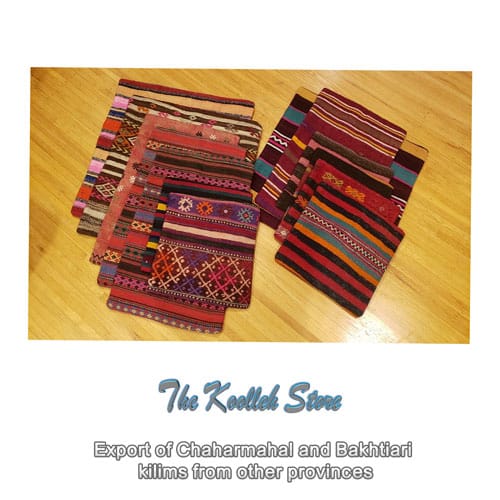Export of Chaharmahal and Bakhtiari kilims from other provinces

Head of Handicrafts Department of Chaharmahal and Bakhtiari General Directorate of Handicrafts, Handicrafts and Tourism, referring to the proper quality of the province’s kilims, said:Unfortunately, there is no direct exporter for the province’s handicraft artists.
Mehrdad Reisi added: Insurance of artists and handicraftsmen, providing historical and cultural sites, paying facilities for the development of this activity and job creation in this field, participation of kilim weaving artists in national, regional and provincial exhibitions are the most important supports that the General Directorate The culture of kilim weaving has been done in the province.
He stated: Most of the products, especially the province’s kilims, are exported through the customs of other provinces, and another part of them are imported to the different countries in the suitcase from the province.
The Deputy Head of Handicrafts of the General Directorate of Handicrafts, Handicrafts and Tourism of Chaharmahal and Bakhtiari continued: If the artists of the province can have comprehensive and purposeful planning for their specialized work in this field, they can reduce unemployment and increase household income by attracting more unemployed people interested in this field. Provinces have a role to play.
Reisi pointed out: The provincial handicrafts union supports the province’s kilim-weaving artists to the best of its ability in purchasing products, marketing and supplying the necessary raw materials.
He considered the quality of the kilim produced in the province to be desirable and said: This general office has planned to support and develop kilim weaving in the province and increase the quality production of this product.
The Deputy Head of Handicrafts of Chaharmahal and Bakhtiari General Directorate of Handicrafts, Industries and Tourism, stating that the cities of Kiar, Lordegan and Ardal have a lot of capacity and potential in the field of kilim production, said: more attention should be paid to these two cities producing kilims in the province.
According to Reisi, due to the comprehensive support of the General Directorate of Cultural Heritage, Handicrafts and Tourism of the province, artists, especially carpet weavers, are given the necessary facilities to expand this profession and it is hoped that the people of this province can use these conditions to quantify kilim production. And increase quality.

